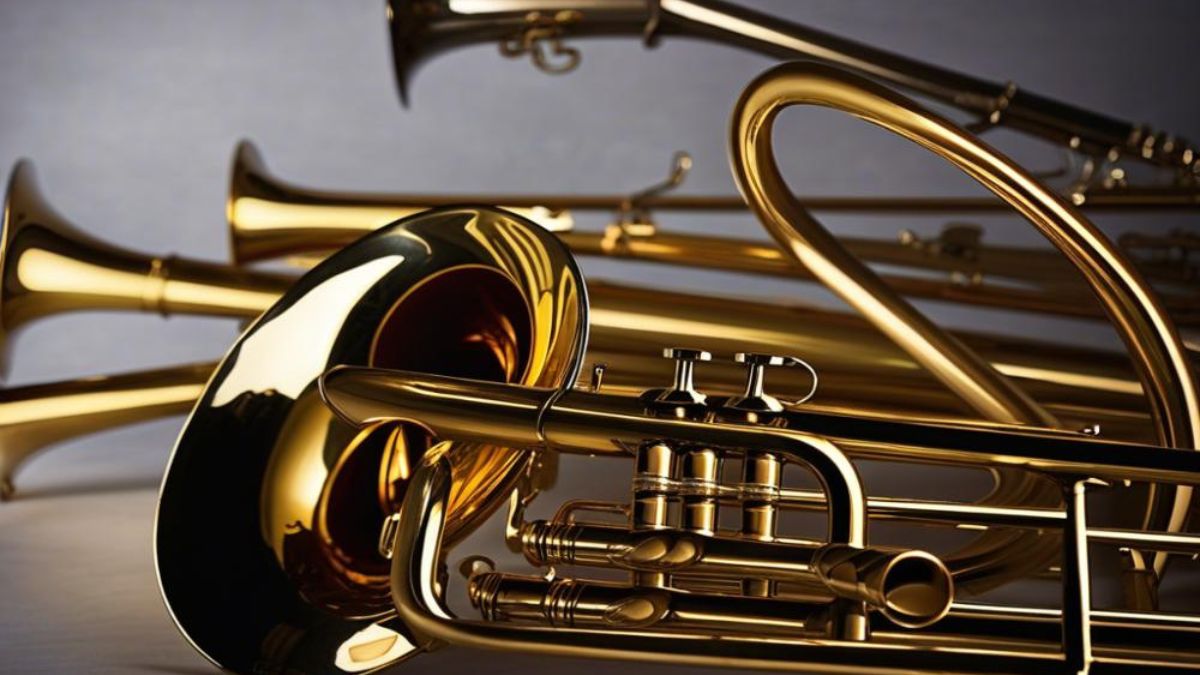The flugelhorn, with its distinctive curved shape and rich sound, has a special place in the world of brass instruments. Often overshadowed by its more famous cousins like the trumpet and trombone, this unique instrument offers a warm tone that captivates both musicians and listeners alike. Whether you’re hearing it in a jazz ensemble or an orchestral setting, there’s something undeniably enchanting about the flugelhorn’s voice.
But where did this fascinating instrument come from? Its history is as intricate as its design. As we explore its origins and evolution through various musical genres, you’ll discover how the flugelhorn not only carved out its niche but also became a beloved choice for many artists across different styles. So buckle up; we’re about to embark on an exciting journey into the captivating world of the flugelhorn!
The Origins of the Flugelhorn
The flugelhorn has deep roots in brass instrument history. Its lineage can be traced back to the early 19th century, emerging as a melodic counterpart to the trumpet.
Originating from Germany, it draws inspiration from both the cornet and the traditional bugle. The design features a wider conical bore which gives it that warm, rich sound distinctively its own.
Historically associated with military bands, the flugelhorn quickly gained popularity beyond marching ensembles. Musicians began experimenting with its expressive capabilities in more intimate settings.
By blending elements of classical music and folk traditions, this instrument carved out a unique niche in various musical landscapes. Its versatility made it appealing across genres and cultures right from its inception.
Evolution and Popularity of the Flugelhorn in Jazz Music
The flugelhorn has carved out a niche in the jazz world since its introduction. Its warm, mellow tone offers musicians a unique palette for expression. Unlike the brighter sound of the trumpet, the flugelhorn embraces a softer approach that lends itself to lyrical improvisation.
In the mid-20th century, artists began to embrace this instrument more seriously. Jazz legends like Chuck Mangione and Art Farmer showcased its capabilities through their mesmerizing solos and innovative compositions. This opened doors for many jazz trumpeters to explore flugelhorn as an alternative voice.
As jazz evolved, so did the place of the flugelhorn within it. It became synonymous with smooth chords and complex melodies, often appearing in both small ensembles and big bands alike. The instrument now stands as a staple in modern jazz performances across various styles, illustrating its enduring appeal among artists today.
Use of the Flugelhorn in Other Genres
The flugelhorn isn’t confined to jazz alone. Its rich, mellow tone finds a place in various musical styles. In classical music, it often adds warmth to orchestral pieces and brass ensembles. Composers appreciate its unique timbre for creating lush textures.
In pop and rock, the flugelhorn occasionally makes a striking appearance. Artists use it to infuse their songs with unexpected depth and emotion. Think of those haunting melodies that linger long after the song ends.
Moreover, in folk music traditions around the world, this instrument has roots as well. It blends seamlessly with acoustic instruments, enhancing storytelling through sound.
Even in film scores, composers harness its expressive qualities to evoke specific feelings or settings. The versatility of the flugelhorn is truly remarkable across genres beyond just jazz.
Famous Musicians Who Have Mastered the Flugelhorn
Several legendary musicians have showcased their mastery of the flugelhorn, contributing significantly to its rich legacy. One prominent figure is Chuck Mangione, whose smooth melodies and jazz-infused sound brought the instrument into popular culture during the 1970s. His hit “Feels So Good” remains a timeless classic.
Another influential artist is Art Farmer, known for his lyrical tone and sophisticated playing style. He skillfully blurred the lines between jazz and classical music, elevating the flugelhorn’s status in both genres.
In contemporary music, we have Brian Lynch, who seamlessly blends Latin rhythms with traditional jazz elements. His innovative approach has expanded the possibilities for this beautiful brass instrument.
These artists are just a few examples of how diverse interpretations can transform perceptions of the flugelhorn within various musical landscapes. Their contributions continue to inspire new generations of musicians eager to explore its unique voice.
Modern Advancements in Flugelhorn Design and Technology
The flugelhorn has undergone remarkable advancements in design and technology over recent years. Manufacturers are now experimenting with materials, offering instruments made from lightweight alloys that provide enhanced resonance and durability.
Many modern flugelhorns feature innovative valve systems that improve playability. These advancements allow for smoother transitions between notes, making it easier for musicians to express their artistry.
Additionally, the incorporation of new acoustic modeling software aids in crafting superior sound quality. This technology enables builders to simulate various shapes and configurations before producing an instrument.
Customization options have also expanded significantly. Musicians can choose different finishes, bell sizes, and bore dimensions to suit their individual styles.
These developments ensure that the flugelhorn remains a relevant choice among contemporary musicians while preserving its rich heritage as a beloved brass instrument. The marriage of tradition with innovation continues to inspire players worldwide.
Conclusion: Why the Flugelhorn Continues to Captivate Musicians and Audiences Alike
The flugelhorn remains a fascinating instrument that has carved its niche in the music world. Its rich, warm tones resonate with both musicians and listeners, offering a unique auditory experience. The flugelhorn’s versatility allows it to seamlessly blend into various genres, from jazz to classical and beyond.
Musicians are drawn to its distinctive sound and expressive capabilities. This is an instrument that tells stories through notes, evoking emotions like few others can. With advancements in design and technology, modern flugelhorns have become even more accessible. They cater not only to seasoned professionals but also to newcomers eager to explore their musical journey.
As we look at the masters who have wielded this horn with brilliance, it’s clear that the flugelhorn is far more than just another brass instrument; it’s a symbol of creativity and passion within music. Whether you’re listening or playing, there’s something truly special about experiencing the vibrations of a well-played flugelhorn.
Its ability to captivate audiences lies not only in its sound but also in the artistry behind each performance. As long as there are musicians willing to breathe life into this charming instrument, the legacy of the flugelhorn will continue for generations yet unborn.










